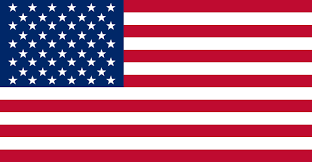How to Calculate Your Real Shipping Cost per Order?
When calculating your fulfillment cost, make sure to account for the following: Labor/Labour Cost, Cost of Supplies as well as Overhead Costs. Summing these up will give you an accurate picture.

When calculating your fulfillment cost, make sure to account for the following: Labor/Labour Cost, Cost of Supplies as well as Overhead Costs. Summing these up will give you an accurate picture.
Shipping cost is more than just the freight you pay to the carrier. It's a process that consists of a lot of micro and macro costs.
You start incurring costs from even before you receive an order.
You must factor in the time it takes to process each order, the supplies used per order as well as the buffer time.
Lastly, you also have fixed expenses you must take care of no matter what.
You must figure out how much time is spent on each order individually. Once you receive an order, someone has to start working on it. There will be time spent on each of the following tasks:
I recommend tracking the total time from start to finish instead of tracking each time separately. I say this because there’s also a transition period when going from 1 task to another.
Figure out how long it takes to go from receiving an order to having it fully packed for FedEx to pickup.
Figured it out? Great. Now multiply that by 1.2. This is important because your calculations might not include all the little things and we also need to account for minor interruptions as well.
Let’s say it takes 15 minutes to process an order. After multiplying it by 1.2, we get 18 minutes. If you are paying $20/hour, the labour on this order is costing you $6 per hour.
How to calculate this? See simple way below:
Some of the supplies that are used up when processing an order include:
Assign a value to the items you know the cost for (I would do this for just the box and the bubble wrap):
It’s not worth it to calculate the cost of the rest of the items such as pens & markers. The cost per order is probably very low and also really hard to calculate. One of the first things they taught in my accounting class was that accounting is an essential process of a business but the cost of accounting must first be worth it.
If you really want to, go ahead and assign $0.10 each or multiply the $0.60 x 1.2 as well.
Some businesses don’t like to factor this in but I think it’s important. Figure out how much you’re paying monthly for the following expenses:
Let’s say everything combined was $5,000.
If you’re doing 250 orders per month, the overhead cost you are incurring for each order is $20 per order.
If you’re doing 2500 orders per month, the overhead cost per order becomes only $2 per order.
If your order volume isn’t large enough, it’s very possible that you won’t be making a profit. As you can tell by now, the fixed expenses are expenses you must pay for no matter what. Whether you have 0 orders or 1000 orders, it’s something you must pay for. If you don’t calculate it into your shipping cost, that’s fine too but it needs to be accounted for somewhere.
Now that you’ve calculated each of them individually, time to put them together.
If FedEx is charging you $10 for a package, then your true shipping cost comes up to $8.60 per order.
There’s a lot of ways to calculate cost but I think this is the simplest. It combines both your fixed expenses and variable costs. Another cool thing about this method is that you can calculate your savings per order as you scale to a larger volume. Low order volume can also cost you a lot of money per order and what seems like profit might not actually be profit.


